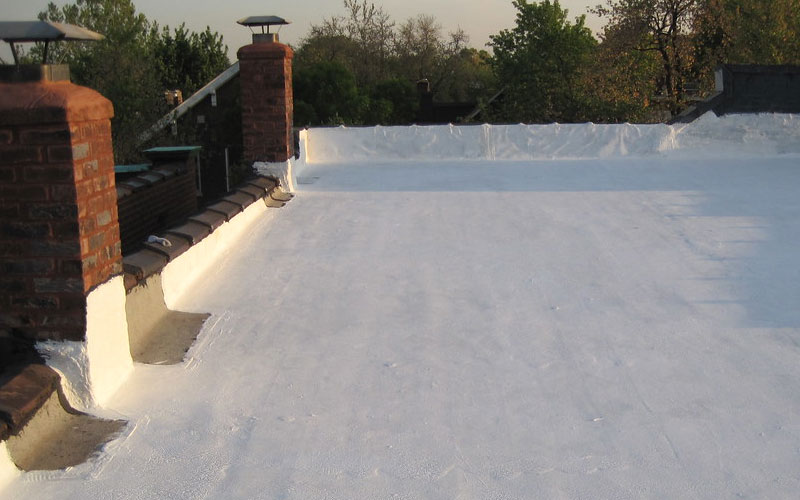The sun is a constant issue to a roof’s integrity. Not just from heat affecting the roof and interior, but also visible light wearing down the color or UV light causing damage to the material. Reflective roof coatings keep the surface looking nice and can resist the damaging effects of sunlight.
What is solar reflectance?
Solar reflectance shows how well the roof resists radiation from the sun. This is measured in a standard known as the Solar Reflectance Index (SRI). A higher SRI reflects heat in order to stay cooler in direct sunlight and resist expanding under the heat, and UV light which can damage the material and cause it to tense up overtime.
What is thermal emittance?
Thermal emittance measures how the roof loses heat in colder temperatures. While a coating with high SRI keeps the roof cool during summer days is important, it’s also important to maintain interior heat as the temperature drops. Lower emittance will lose less heat at night and during winter, helping to insulate the interior of the home.
What is CRRC?
The Cool Roof Rating Council (CRRC) is a nonprofit organization for testing roof products within the first 3 years to measure solare reflectance. The CRRC offers programs to measure a product’s thermal emittance and SRI over the course of it’s early life and provides their own testing independently from companies to ensure unbiased and trustworthy results.
How much of a difference can reflective roof coatings make?
Reflective roof coatings can reduce the costs of keeping a home at a comfortable temperature, reducing energy use and homeowner costs. Not only will the roof resist temperature changes but likely reduce the costs to heat and cool the indoors. Furthermore, reflecting UV light will reduce damage to the coat itself, maintaining quality protection and increasing its lifetime between recoats.
How does dirt pickup affect reflectivity?
Any change to the surface that makes it darker can increase heat absorption, most notably dirt as it comes in contact with the coating’s surface. Dirt pickup can greatly lower reflectivity and whiteness, thus a surface with good reflectivity should also be able to resist picking up dirt particles over it’s lifetime as a measure of ensuring it’s long term quality.
Does every roof need to have reflectivity?
Homes exposed to substantial amounts of sunlight should consider a reflective roof coating to prevent the sun’s effects on the structure. A building covered by shade through most of the day may not need to consider a reflective coat, every home has different needs, but other factors such as the thermal emittance may still be a factor as temperatures drop.

